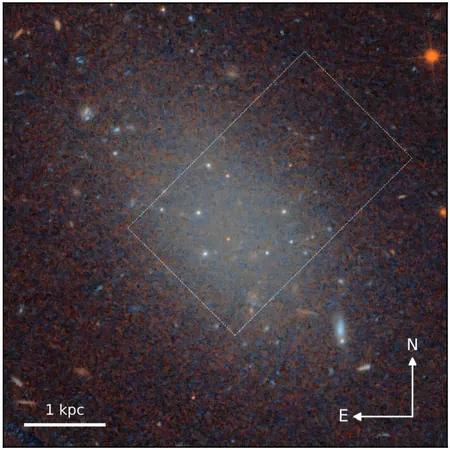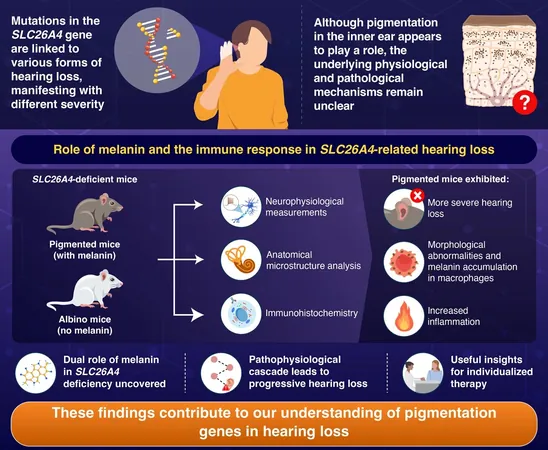
Hubble Unleashes Secrets of Unusual Globular Clusters in Ultra-Diffuse Galaxy FCC 224!
2025-01-29
Author: Jia
Introduction
In a groundbreaking discovery, astronomers utilizing the Hubble Space Telescope (HST) have turned their gaze towards the enigmatic ultra-diffuse galaxy FCC 224, located approximately 65 million light years away in the Fornax galaxy cluster. The research team from the University of California Santa Cruz (UCSC) and their collaborators unveiled their findings on January 18, revealing stunning insights into the galaxy’s unique structure and its globular cluster system.
What are Globular Clusters?
Globular clusters (GCs) consist of tightly bound groups of stars orbiting galaxies and serve as essential laboratories for astrophysical research. These clusters potentially hold the key to understanding the formation and evolution of early-type galaxies—a topic of significant interest among astronomers, as GCs are often formed during explosive periods of star formation.
About FCC 224
FCC 224 itself is estimated to be around 10 billion years old and possesses a major axis effective radius of about 6,160 light years with an estimated mass of 200 million solar masses. Notably, previous research had already indicated that this galaxy hosts 12 exceptionally bright globular clusters. Some of these clusters have been measured to possess absolute magnitudes of approximately -9.0 mag—an unusually high luminosity.
Observations and Findings
In their investigation, led by astronomer Yimeng Tang from UCSC, the team employed HST's Wide Field Camera 3 (WFC3) in conjunction with spectroscopic data from the Keck Cosmic Web Imager (KCWI). Their observations revealed that the globular clusters in FCC 224 exhibited colors remarkably close to the surrounding diffuse starlight, demonstrating an unusually tight color spread. Notably, the galaxy itself was shown to lack any significant color gradient, hinting at an intense and singular period of star formation in its history.
Mass and Age of Globular Clusters
Researchers calculated the total mass of the globular clusters within FCC 224 to be about 3.8 million solar masses, which represents around 2% of the galaxy's total stellar mass. This discrepancy indicates that FCC 224 hosts an unexpectedly massive globular cluster system for a galaxy of its size, implying that the clusters are, on average, overmassive. The study estimated the mean stellar age of FCC 224 to be around 10.1 billion years, alongside a metallicity measurement of -1.25 dex, suggesting a complex chemical evolution tied to its formation history.
Cluster Distribution and Characteristics
Fascinatingly, the overall sizes of the globular clusters were relatively small, with half-light radii ranging between 7.8 and 15.6 light years. Intriguingly, the distribution of the clusters also appeared to show a radial mass segregation; brighter clusters were found closer to the center of the galaxy compared to their dimmer counterparts located further out. This pattern led the researchers to identify a top-heavy luminosity function among the galaxy's globular clusters.
Conclusion
The authors concluded that FCC 224 possesses a remarkably unusual globular cluster system, but they emphasized that further theoretical investigations are essential to truly fathom the origins of these peculiar properties. This discovery opens new avenues for understanding not only FCC 224 but also the broader implications on the evolution of ultra-diffuse galaxies across the cosmos.
Stay Tuned!
Stay tuned for more revelations from the depths of space as astronomers continue to peel back the layers of our universe’s mysteries!



 Brasil (PT)
Brasil (PT)
 Canada (EN)
Canada (EN)
 Chile (ES)
Chile (ES)
 Česko (CS)
Česko (CS)
 대한민국 (KO)
대한민국 (KO)
 España (ES)
España (ES)
 France (FR)
France (FR)
 Hong Kong (EN)
Hong Kong (EN)
 Italia (IT)
Italia (IT)
 日本 (JA)
日本 (JA)
 Magyarország (HU)
Magyarország (HU)
 Norge (NO)
Norge (NO)
 Polska (PL)
Polska (PL)
 Schweiz (DE)
Schweiz (DE)
 Singapore (EN)
Singapore (EN)
 Sverige (SV)
Sverige (SV)
 Suomi (FI)
Suomi (FI)
 Türkiye (TR)
Türkiye (TR)
 الإمارات العربية المتحدة (AR)
الإمارات العربية المتحدة (AR)